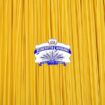
A Dive Into The World Of Sashimi
At its most fundamental essence, sashimi is something raw, carved up and offered. It can be anything at all – beef, scallops, even chicken – and without a doubt the most popular sashimi is seafood. However, it is most popularly known for its fish variant.
When discussing sashimi, it is frequently mistaken referenced as merely slices of raw fish. Nonetheless, sashimi is part of Japan’s gastronomic heritage and includes not only the slicing but also the imaginative facet of the cooking make-up of the fish.
The cook chooses the base ingredients of his sashimi with terrific care: it has to constantly be exceptionally fresh. This is why sashimi delivery Singapore services are often engaged by restaurants, home cooks and amateur chefs who require fresh and safe ingredients to be used in their food preparation.
Sashimi isn’t constantly pieces of fish: it can likewise be pieces of crustaceans or shellfish, such as shrimp or scallop. The fish most commonly utilized in sashimi are tuna, salmon, sea bream, mackerel and dab.
In the Osaka area, fugu (pufferfish) is also used, which is toxic otherwise perfectly ready! Only certain chefs are licensed to prepare and serve it, after receiving a main certification awarded by the state.
As soon as the fish has been selected, it is filleted and skinned (if selecting an entire fish). Then there isn’t a lot more to the preparation of sashimi than simply slicing it up. Japanese cooks can name dozens of various carving methods for sashimi, yet you just require to know a few.
The hira-zukuri (rectangle-shaped slice) cut is the most common. Beginning with the right side of the fillet (for right handers) bring the blade from its foundation to its apex in a solitary vertical stroke. This is for a tidy slice of fish between half a centimetre to greater than 1cm wide. The pieces are stacked like publications on a bookshelf. This cut is frequently made use of for tuna, salmon and kingfish.
The angled usu-zukuri (thin slice) cut begins from the left of the fillet, brining the blade at a nearly horizontal angle across the grain, producing a really thin, diagonal cut that is best for firm, white fish with slim fillets like bream, flounder and whiting.
Other cuts such as the kaku-zukuri (square slice) produces tiny dices of dense, supple fish like tuna and the ito-zukuri (thread slice) creates slim slivers of narrow fish and seafood like garfish and squid.
After it is sliced, sashimi is almost always laid out as a type of landscape with 3 edible garnishes on the plate – ken, tsuma and karami – a base, a highlight and a spicy condiment.





